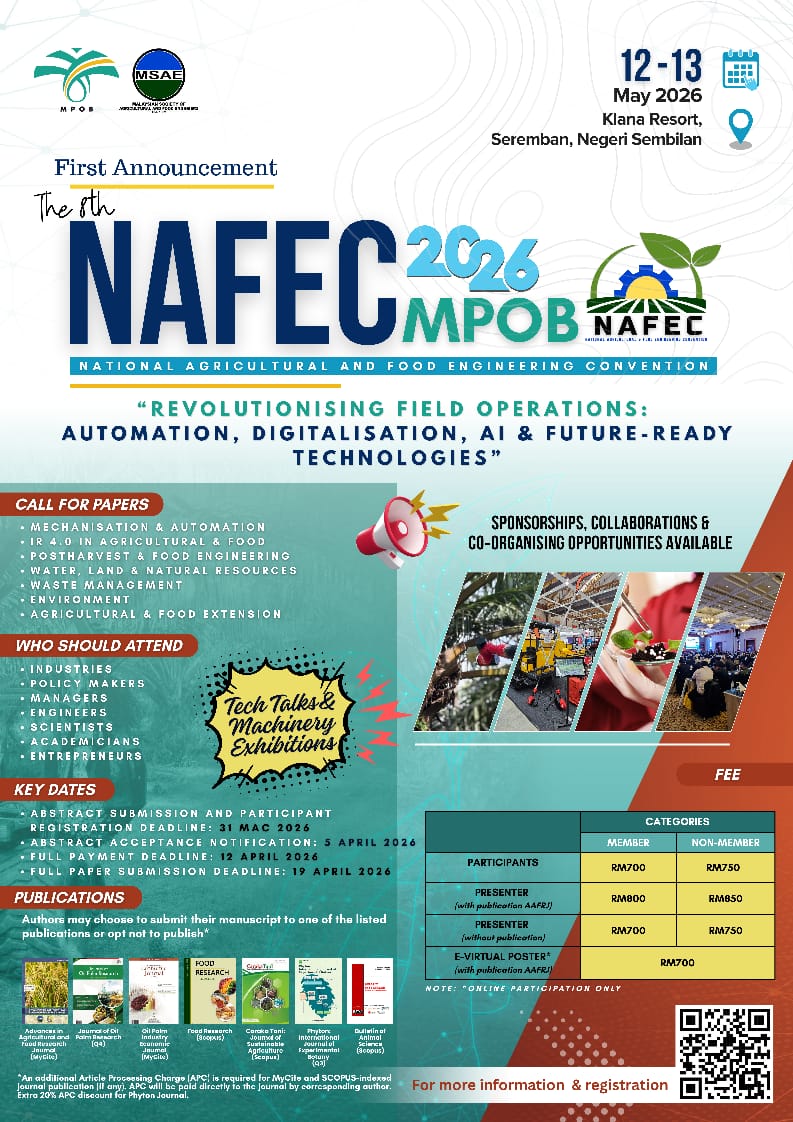Preliminary Study: Antimicrobial Permeation and Release Rates of Biocellulose Wound Dressing Produced Using Acetobacter Xylinum 0416 in Pineapple Peel Waste Culture
DOI:
https://doi.org/10.36877/aafrj.a0000419Abstract
Modern wound dressings are employed to hasten the healing of damaged skin. Alginate, foam, hydrogel, hydrocolloid and film are contemporary wound dressings. These contemporary wound dressings are effective for treating wounds because they keep moisture in the wound to help the skin of the damaged tissue heal. Another application for biocellulose (BC) is as a material for treating wounds. This is because biocellulose can absorb exudates from skin wounds and has a considerable water-holding capacity. Because pineapple peel waste has a high concentration of glucose and fructose, it can be used as a fermentation medium to make biocellulose. The manufacture of biocellulose also makes use of the bacterium Acetobacter xylinum 0416. The biocellulose fermentation process lasts five days at 30 °C in an incubator with static conditions. Utilising antimicrobial agents such as silver nanoparticle compounds, Moringa oleifera, or Melastoma malabathricum leaf extract will improve the antibacterial capabilities of biocellulose. The growth of A. xylinum 0416 indicates an exponential phase at 48 hours, where the number of bacterial cells increases, and the process of transferring 20% of the inoculum to the fermentation medium is carried out. BC fermentation in 6-well plates with 3 ml of pineapple peel extract volume at 30°C and pH 5.15 recorded the highest BC wet weight reading at 1.740g and an average of 1.393g. Low concentrations of silver nanoparticles and Moringa leaf extract at 0.02mg/ml, 5mg/l and 0.0125mg/l showed a good effect against the pathogen. The water absorption capacity of the raw BC shows a good absorption value of 144.84.
Downloads
Published
How to Cite
Issue
Section
License
Copyright (c) 2024 Norliza Abd.Rahman, Nur Asherin Binti Sayuti, Jarinah Mohd Ali, Noorashikin Md Saleh , Ahmad Razi Othman, Mazlina Mohd Said, Hafiza Shukor, Wan Rizzal Wan Zaki

This work is licensed under a Creative Commons Attribution-NonCommercial 4.0 International License.
Author(s) shall retain the copyright of their work and grant the Journal/Publisher right for the first publication with the work simultaneously licensed under:
Creative Commons Attribution-NonCommercial 4.0 International (CC BY-NC 4.0). This license allows for the copying, distribution and transmission of the work, provided the correct attribution of the original creator is stated. Adaptation and remixing are also permitted.

This broad license intends to facilitate free access to, as well as the unrestricted reuse of, original works of all types for non-commercial purposes.
The author(s) permits HH Publisher to publish this article that has not been submitted elsewhere.

.png)

.jpg)



